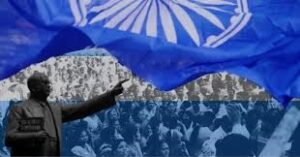Written by: Ruhi Abdali
Violence against Dalits and Adivasis is a pervasive and deeply rooted issue in India, stemming from centuries of social and economic marginalization. Despite constitutional protections and laws aimed at safeguarding their rights, these communities continue to face atrocities, exclusion, and discrimination.
Historical Context
The caste system, which has been a part of Indian society for thousands of years, has led to the marginalization and oppression of certain groups, including Dalits and Adivasis. Dalits, also known as “untouchables,” have been subjected to severe social and economic exclusion, while Adivasis, India’s indigenous people, have faced displacement and marginalization due to development projects, deforestation, and other factors.
Forms of Violence
Violence against Dalits and Adivasis takes many forms, including:
- Physical Violence: Atrocities such as beatings, lynchings, and murders are common, often perpetrated by members of dominant castes or groups.
- Social Exclusion: Dalits and Adivasis are often excluded from social and economic opportunities, including education, employment, and access to public services.
- Economic Exploitation: These communities are often forced into bonded labor, denied fair wages, and exploited for their resources and land.
- Psychological Trauma: The constant threat of violence and exclusion can lead to significant psychological trauma, affecting mental health and well-being.
Causes of Violence
The causes of violence against Dalits and Adivasis are complex and multifaceted, including:
- Caste-Based Prejudices: Deep-seated prejudices and biases against Dalits and Adivasis perpetuate violence and exclusion.
- Lack of Access to Education and Employment: Limited access to education and employment opportunities exacerbates poverty and marginalization.
- Inadequate Law Enforcement: Inadequate law enforcement and lack of accountability for perpetrators contribute to the perpetuation of violence.
- Displacement and Land Grabbing: Development projects, mining, and other activities often lead to displacement and land grabbing, further marginalizing these communities.
Constitutional Protections and Laws
The Indian Constitution and various laws provide protections for Dalits and Adivasis, including:
- Scheduled Castes and Scheduled Tribes (Prevention of Atrocities) Act, 1989: This law aims to prevent atrocities against Dalits and Adivasis and provide justice to victims.
- Article 17 of the Indian Constitution: This article abolishes “untouchability” and prohibits its practice.
- Article 342 and 366(25): These articles provide for the recognition and protection of Scheduled Tribes.
Challenges and Way Forward
Despite these protections, violence against Dalits and Adivasis persists. Challenges include:
- Lack of Awareness and Implementation: Laws and policies are often not implemented effectively, and awareness about rights and protections is limited.
- Social and Economic Inequalities: Deep-seated social and economic inequalities perpetuate violence and exclusion.
- Inadequate Support Systems: Support systems for victims, including counseling and rehabilitation, are often inadequate.
To address these challenges, it is essential to:
- Strengthen Law Enforcement and Accountability: Ensure that laws are enforced effectively, and perpetrators are held accountable.
- Promote Education and Awareness: Educate communities about their rights and protections, and promote awareness about the issues faced by Dalits and Adivasis.
- Address Social and Economic Inequalities: Implement policies and programs to address social and economic inequalities, including education and employment opportunities.
- Provide Support Systems: Establish adequate support systems, including counseling and rehabilitation, for victims of violence.
By working together to address these challenges, we can create a more just and equitable society for all, where Dalits and Adivasis can live without fear of violence and exclusion.
Conclusion
Violence against Dalits and Adivasis is a serious issue that requires immediate attention and action. By understanding the historical context, forms of violence, causes, and constitutional protections, we can work towards creating a more just and equitable society. It is essential to strengthen law enforcement, promote education and awareness, address social and economic inequalities, and provide support systems to victims. Only then can we ensure that Dalits and Adivasis can live with dignity and respect.
Recommendations
- Strengthen the Scheduled Castes and Scheduled Tribes (Prevention of Atrocities) Act, 1989: Amend the law to make it more effective in preventing atrocities and providing justice to victims.
- Increase Awareness and Education: Launch awareness campaigns to educate communities about their rights and protections, and promote understanding about the issues faced by Dalits and Adivasis.
- Improve Access to Education
“Breaking the Chains of Oppression”-A short story 
The sun was setting over the small village of Ramanpur, casting a golden glow over the dusty streets and mud huts. But despite the peaceful atmosphere, a sense of unease hung in the air. For the Dalits and Adivasis of Ramanpur, violence and discrimination were a harsh reality.
Kamal, a young Dalit man, had always known the pain of being treated as an outcast. He remembered the days when he was forced to sit at the back of the classroom, when he was not allowed to touch the food cooked by the upper-caste women, and when he was beaten for simply walking through the upper-caste part of the village.
But Kamal had never given up. He had worked hard to educate himself, and had even managed to secure a job in the village administration. He was determined to make a difference in his community, to fight for their rights and to bring about change.
One day, Kamal’s determination was put to the test. A group of upper-caste men, fueled by anger and hatred, attacked a group of Dalit women who were working in the fields. The women were beaten and humiliated, and Kamal knew he had to act fast.
He went to the police station and filed a complaint, but the police were reluctant to take action. They told Kamal that it was just a minor incident, and that the upper-caste men were good people who would never do such a thing.
But Kamal refused to give up. He organized a protest march through the village, demanding justice for the Dalit women and an end to the violence and discrimination. The march was peaceful, but it was a powerful statement of the Dalits’ determination to fight for their rights.
The upper-caste men were furious, and they vowed to take revenge on Kamal and the Dalits. They threatened to burn down their homes and to attack them with acid. But Kamal was not afraid. He knew that he was fighting for a just cause, and he was determined to see it through.
Days turned into weeks, and the tension in the village continued to build. The Dalits were determined to stand up for their rights, and the upper-caste men were determined to keep them in their place. It seemed like a solution was impossible, and that the violence and discrimination would continue forever.
But then, something changed. A group of activists from the city came to the village, determined to help the Dalits and Adivasis. They organized workshops and meetings, and they helped the Dalits to understand their rights and to fight for them.
Kamal was inspired by the activists, and he began to work with them to bring about change in the village. Together, they organized more protest marches and rallies, and they demanded justice for the Dalit women who had been attacked.
Slowly but surely, things began to change. The police started to take the complaints seriously, and the upper-caste men began to realize that they could no longer get away with their violent and discriminatory behavior.
The Dalits and Adivasis of Ramanpur were finally starting to get the respect and dignity they deserved. They were starting to stand up for their rights, and they were refusing to be treated as outcasts.
Kamal’s story is just one example of the many struggles that Dalits and Adivasis face every day. But it is also a testament to the power of determination and activism. When people come together to fight for their rights, they can achieve great things.
The struggle continues…..
Despite the progress that has been made, the struggle for Dalit and Adivasi rights is far from over. Violence and discrimination continue to be a harsh reality for many people in India.
But there is hope. There are many organizations and individuals who are working tirelessly to bring about change and to promote equality and justice. And there are many stories of courage and resilience, of people who have refused to give up in the face of adversity.
Kamal’s story is one such example. He refused to give up, even when faced with violence and discrimination. He stood up for his rights, and he fought for justice. And in the end, he was successful.







